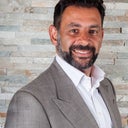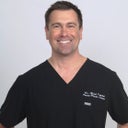Hi, this depends on what type of facelift and neck lift you are having. Mid Face facelifts can have similar incisions as the standard facelift described below or in the case of a subperiosteal lift the incisions are through the mouth and inside the hair of the temples. While that may appear as an attractive option, this facelift tends to create upturned corners of the eyebrows and eys because of the direction of tissue elevation and pull. The cheek tissues can be placed too far laterally giving the face a "wider look" that combined with the "joker" smile is aesthetically unappealling. For those reasons and the prolonged healing time associated with this typoe of facelift, I do not recommend or offer this facelift procedure. Standard facelifts, including a formal neck lift take about 6 hours to complete and have a very long incision that starts about 4 inches from the upper ear inside the hair of the temple, curves around or goes in front of the ear, continues inside the crease behind the ear and continues into the posterior hair behind the ear for 4 inches. The is an incision under the chin in any versiion of a neck lift, including the one formal neck lift. I perfomed many of these facelifts for many years but in the last 10 years people are looking for facelifts that have smaller incisions, heal faster and are without the lenghty recovery time associated with the traditional/standard face and neck lifts. If you have "jowls" this is sagging facial tissues and an indication for some form of a facelift. The underlying SMAS layer, of the face, must be dissected, lifted, trimmed and re-sutured (not merely folded or suspended with threads or sutures that will not last). The excess skin is then removed and the facelift incisions closed.





